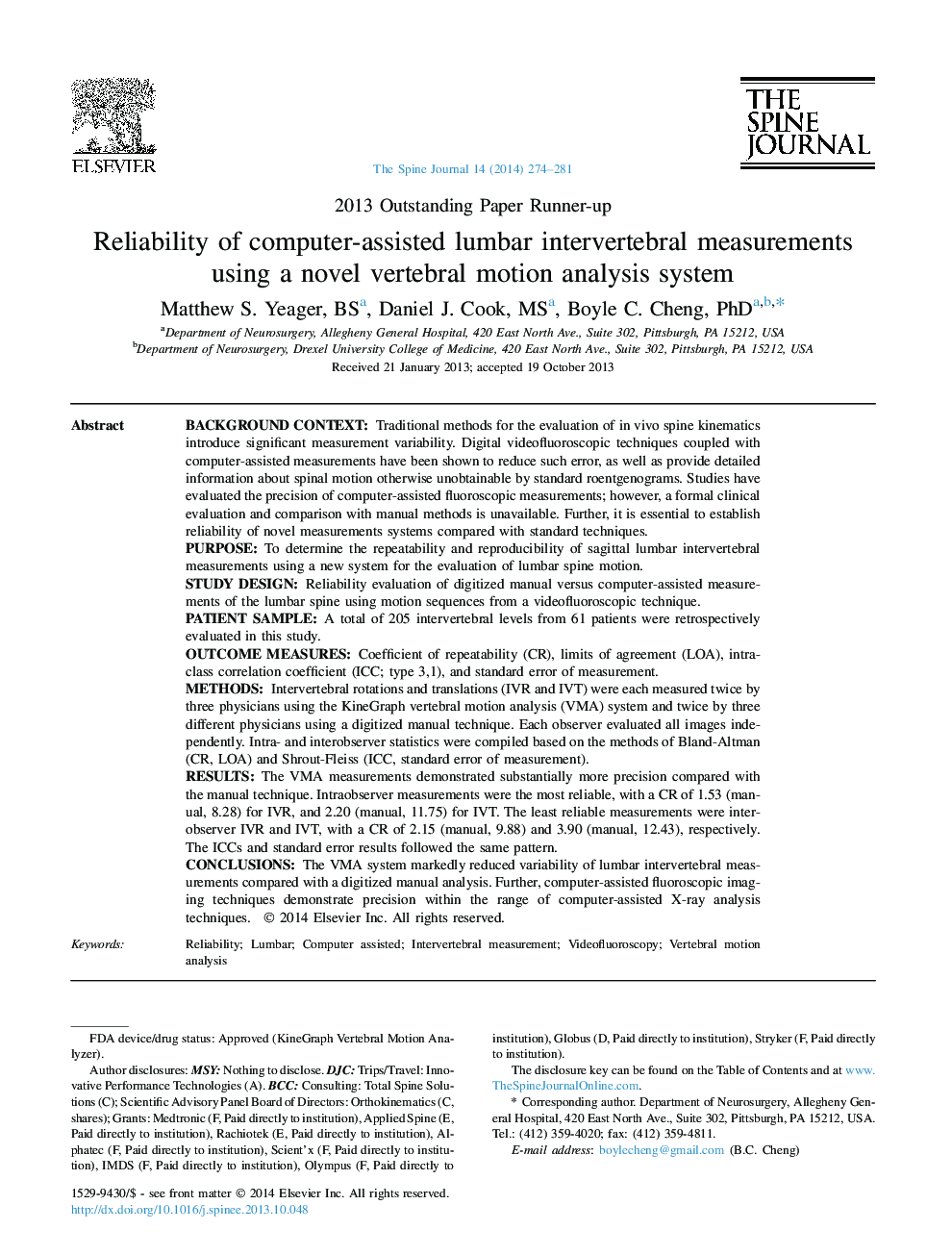| Article ID | Journal | Published Year | Pages | File Type |
|---|---|---|---|---|
| 6212883 | The Spine Journal | 2014 | 8 Pages |
Background contextTraditional methods for the evaluation of in vivo spine kinematics introduce significant measurement variability. Digital videofluoroscopic techniques coupled with computer-assisted measurements have been shown to reduce such error, as well as provide detailed information about spinal motion otherwise unobtainable by standard roentgenograms. Studies have evaluated the precision of computer-assisted fluoroscopic measurements; however, a formal clinical evaluation and comparison with manual methods is unavailable. Further, it is essential to establish reliability of novel measurements systems compared with standard techniques.PurposeTo determine the repeatability and reproducibility of sagittal lumbar intervertebral measurements using a new system for the evaluation of lumbar spine motion.Study designReliability evaluation of digitized manual versus computer-assisted measurements of the lumbar spine using motion sequences from a videofluoroscopic technique.Patient sampleA total of 205 intervertebral levels from 61 patients were retrospectively evaluated in this study.Outcome measuresCoefficient of repeatability (CR), limits of agreement (LOA), intraclass correlation coefficient (ICC; type 3,1), and standard error of measurement.MethodsIntervertebral rotations and translations (IVR and IVT) were each measured twice by three physicians using the KineGraph vertebral motion analysis (VMA) system and twice by three different physicians using a digitized manual technique. Each observer evaluated all images independently. Intra- and interobserver statistics were compiled based on the methods of Bland-Altman (CR, LOA) and Shrout-Fleiss (ICC, standard error of measurement).ResultsThe VMA measurements demonstrated substantially more precision compared with the manual technique. Intraobserver measurements were the most reliable, with a CR of 1.53 (manual, 8.28) for IVR, and 2.20 (manual, 11.75) for IVT. The least reliable measurements were interobserver IVR and IVT, with a CR of 2.15 (manual, 9.88) and 3.90 (manual, 12.43), respectively. The ICCs and standard error results followed the same pattern.ConclusionsThe VMA system markedly reduced variability of lumbar intervertebral measurements compared with a digitized manual analysis. Further, computer-assisted fluoroscopic imaging techniques demonstrate precision within the range of computer-assisted X-ray analysis techniques.
